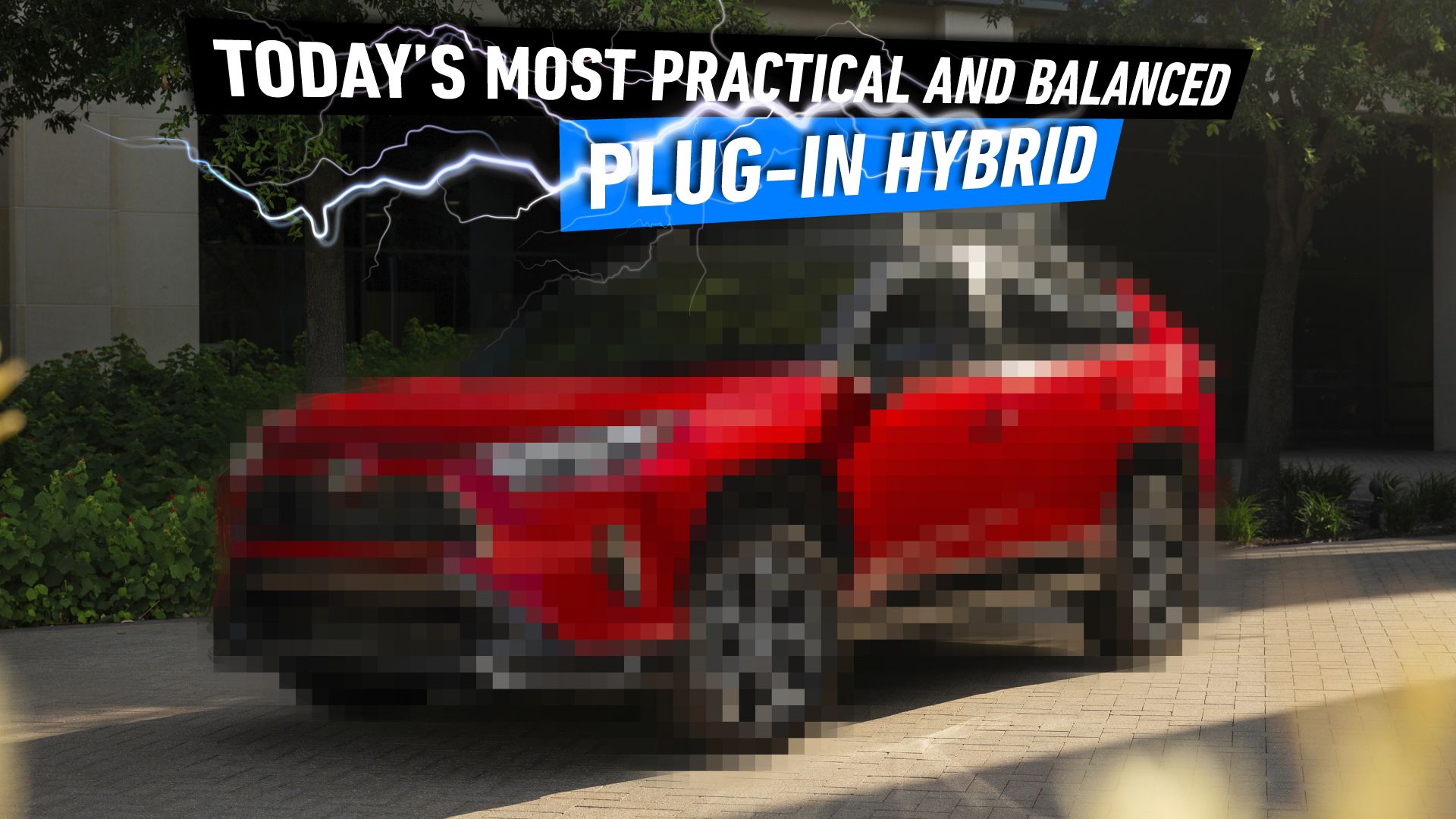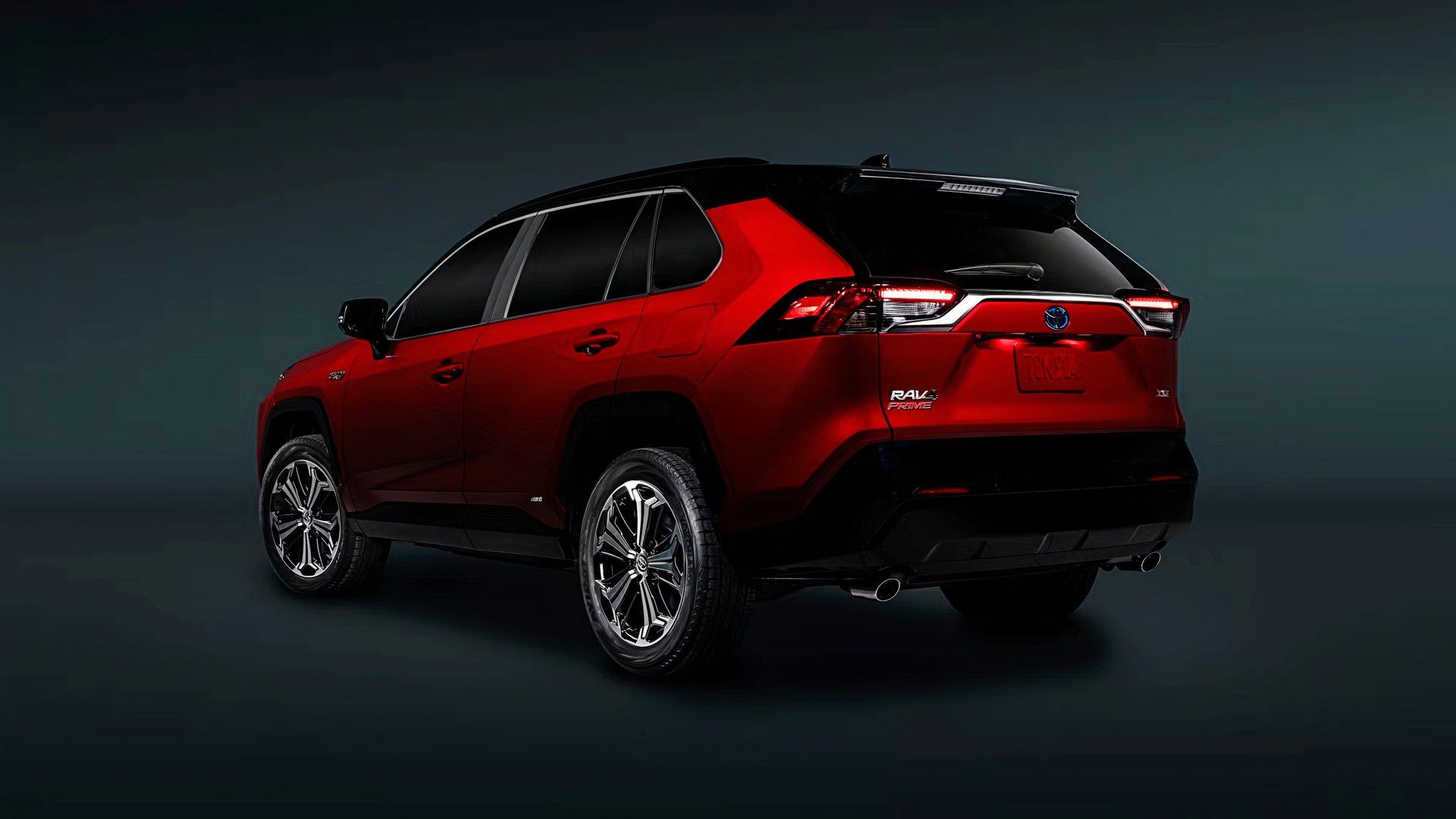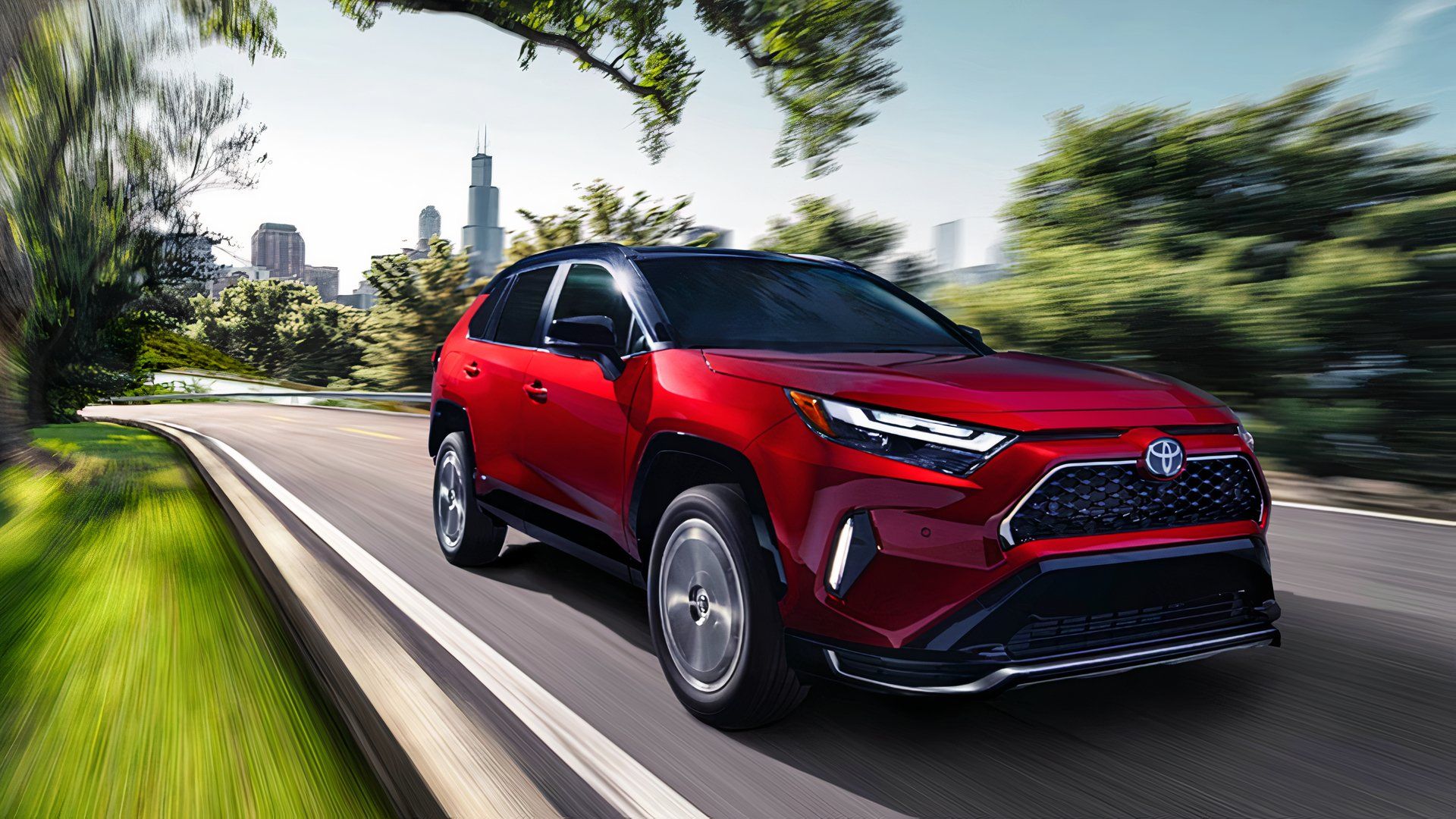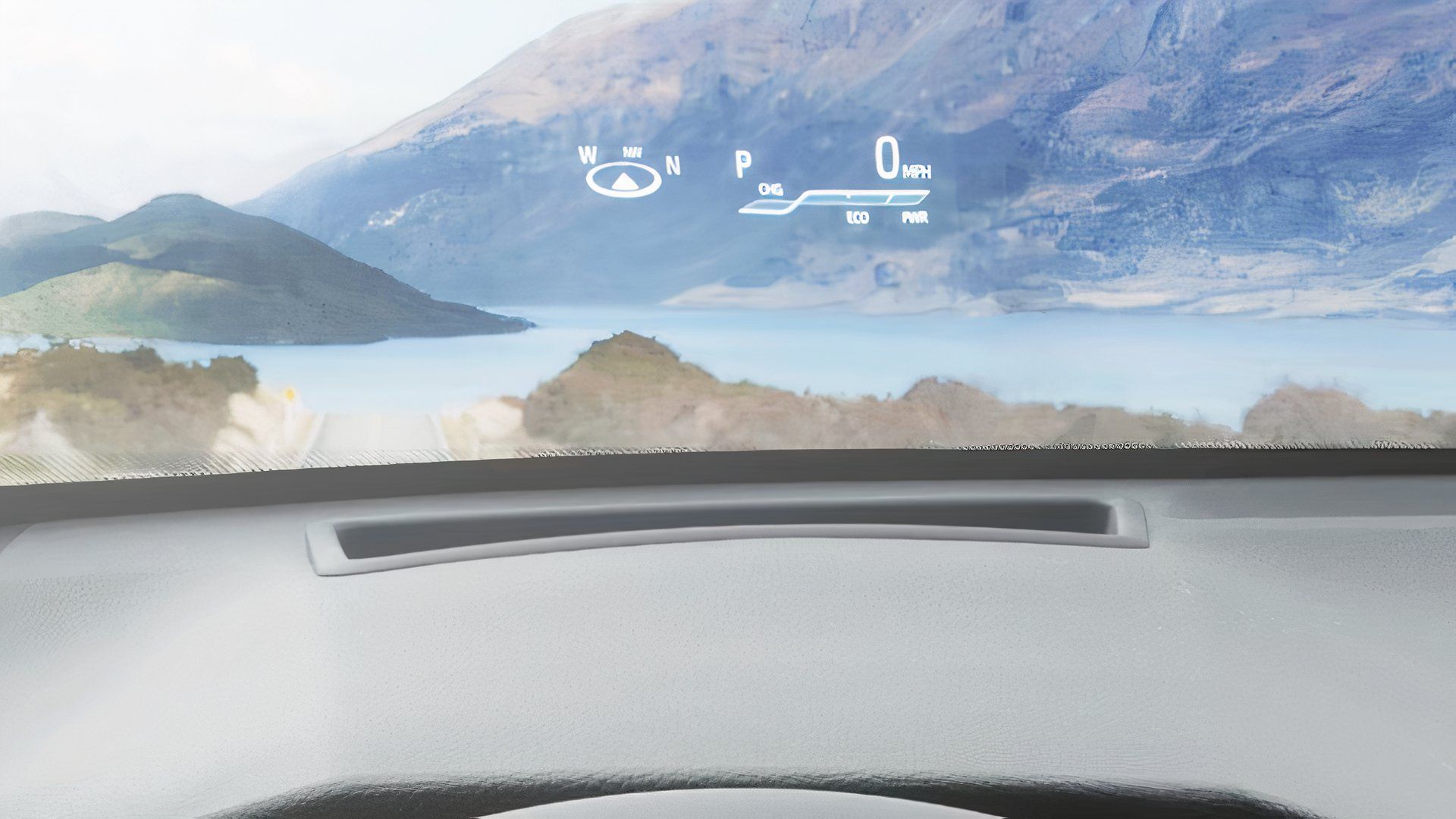Plug-in hybrid SUVs have great potential. These vehicles use complex powertrain setups to improve efficiency and drastically reduce carbon emissions. Advancements in technology allow some small plug-in hybrid SUVs to be even more efficient than some gas sedans. This is great for consumers looking to save money on fuel. Furthermore, PHEVs can produce incredible horsepower and torque, making them fun to drive.
There are many plug-in hybrid SUV options to choose from today, but not all of them are well-balanced. Some can be extremely pricey. Luckily, there’s one small plug-in hybrid SUV on the market for 2025 that’s practically perfect in terms of practicality. It happens to be a model from the king of hybrid powertrains, Toyota Motor Company.
In order to give you the most up-to-date and accurate information possible, the data used to compile this article was sourced from Toyota and other authoritative sources.

Related
Ranking The Toyota RAV4 Model Years For Reliability
America’s favorite compact SUV. See the most reliable model years.
The 2025 Toyota RAV4 Plug-In Hybrid Blends Practicality And Performance
Toyota produces some of the most popular SUVs in the world, such as the Toyota RAV4 and Toyota Highlander. It’s no beginner to producing SUVs with great utility at affordable prices. Performance may not be the company’s first priority, but it also has a history of producing quick and capable vehicles like the Toyota Supra. The RAV4 Plug-In Hybrid is a take on the popular small family SUV, the RAV4, that takes power and efficiency up a notch.
Toyota is known for leading the industry in the hybrid space with models like the Toyota Prius. Now, it’s leading the plug-in hybrid space with models like the Toyota Prius Prime and the Toyota RAV4 Plug-In Hybrid. These vehicles may seem incredibly expensive compared to their hybrid counterparts, but they have plenty to offer. The 2025 Toyota RAV4 Plug-In Hybrid perfectly exemplifies how a good PHEV can balance extraordinary gas mileage with performance that improves the overall driving experience.
Why The Toyota RAV4 Plug-In Hybrid Is The Most Balanced PHEV For 2025
The Toyota RAV4 Plug-In Hybrid is the most balanced plug-in hybrid for 2024 because it’s spacious enough to transport passengers and cargo comfortably while still offering driving dynamics that are exciting to driving enthusiasts. Additionally, the RAV4 Plug-In Hybrid is efficient enough to appeal to folks who want to save money on fuel. Toyota’s small SUV is popular because it’s well-balanced. The RAV4 Plug-In Hybrid builds on the practicality of its gas and hybrid predecessors. It adds raw power and acceleration to a small SUV body style often considered uniform and mundane.
RAV4s are typically purchased by drivers with small families who need a reliable and affordable SUV. The Toyota RAV4 Plug-In Hybrid is sporty and exhilarating to drive, which is oxymoronic for the gas iteration of the small SUV. One of the best-selling small SUVs in America has just become more fun in the form of the RAV4 Plug-In Hybrid. The question is, just how exciting is Toyota’s plug-in hybrid SUV?

Related
Here’s Why The RAV4 Hybrid Stands Out In Toyota’s Hybrid SUV Lineup
For those seeking a vehicle that delivers on all fronts, the RAV4 Hybrid is a compelling choice that continues to set the standard for hybrid SUVs.
It Produces 302 Horsepower
The 2025 Toyota RAV4 Plug-In Hybrid produces an impressive 302 horsepower. That’s 99 more horses than the internal combustion engine RAV4 and its 2.5-liter four-cylinder engine. This power boost comes from its three electric motors, which also work with its battery to make the family SUV more fuel-efficient.
Performance Specifications
|
Starting Price |
$43,865 |
|
Powertrain |
2.5-liter four-cylinder with electric motors |
|
Horsepower |
302 horses |
|
0-60 MPH Time |
5.5 seconds |
|
Fuel Efficiency |
94 MPGe |
|
Tank Size |
14.5 gallons |
|
Driving Range |
593 miles |
|
Battery |
18.1 kWh 355 V lithium-ion |
|
Electric Driving Range |
42 miles |
Toyota’s small plug-in hybrid starts at $43,865 and is not eligible for a federal electric vehicle tax credit at the time of writing. It achieves around 94 miles per gallon equivalent. The PHEV can travel over 593 miles on a full gas tank while utilizing its full-electric driving range. The 2025 RAV4 Plug-In Hybrid may look like a gas or hybrid RAV4, but its performance specifications tell a different story. The RAV4 Plug-In Hybrid is one of the quickest SUVs Toyota has ever produced. It’s the second-quickest model in the brand’s lineup, behind the Toyota Supra.

Add TopSpeed to your Google News feed.
Toyota’s Small Plug-In Hybrid SUV Offers Great Standard Features
So, we’ve established that the 2025
Toyota RAV4 Plug-In Hybrid
has some admirable performance specs, but what about standard features? Thanks to technological advancements, some plug-in hybrid models have standard features that outclass those of internal combustion engine-based model vehicles. PHEVs often come standard with some of the best features that a brand has to offer.
2025 Toyota RAV4 Plug-In Hybrid Standard Features
- Wireless Apple CarPlay/Android Auto
- Vehicle proximity notification system
- Hill start assist control
- Blind spot monitor with rear cross traffic alert
- Tire pressure monitor system
- Smart key system
- Soft-touch dash and armrests
The RAV4 Plug-In Hybrid has a refined interior compared to the average base model RAV4. Furthermore, it has plenty of standard tech and safety features that make driving and ownership easier, safer, and more convenient. If these features aren’t enough to pique your interest, the RAV4 Plug-In Hybrid comes in an XSE trim that offers even more advanced features.
Best Available RAV4 Plug-In Hybrid Features
- 10.5-inch touchscreen infotainment system
- SofTex-trimmed seats
- 11-speaker JBL premium audio system
- 12.3-inch digital gauge cluster
- Steering-wheel mounted paddle shifters
- 19-inch sport alloy wheels
- Two-tone exterior color with Midnight Black metallic roof
The final trim of the RAV4 Plug-In Hybrid XLE includes a sound system upgrade and an interior material upgrade. It also features better tech than the base model, such as a larger infotainment system and digital gauge cluster. The 2025 Toyota RAV4 Plug-In Hybrid XLE features a leather-trimmed steering wheel, heated front seats, and wireless smartphone charging. Toyota also offers a Premium package for the RAV4 Plug-In Hybrid XLE for an additional $2,585. It includes a 10-inch head-up display, a panoramic glass roof, heated and ventilated front seats, heated rear outboard seats, a digital rearview mirror with HomeLink, and a front/rear parking assist.
The 2025 Toyota RAV4 Plug-In Hybrid has plenty to offer if you’re looking for a practical family SUV that’s fun and engaging to drive. It’s easily one of the most well-balanced new vehicles on the market. Its PHEV benefits, such as an electric-only driving range and more power, make it even more appealing.
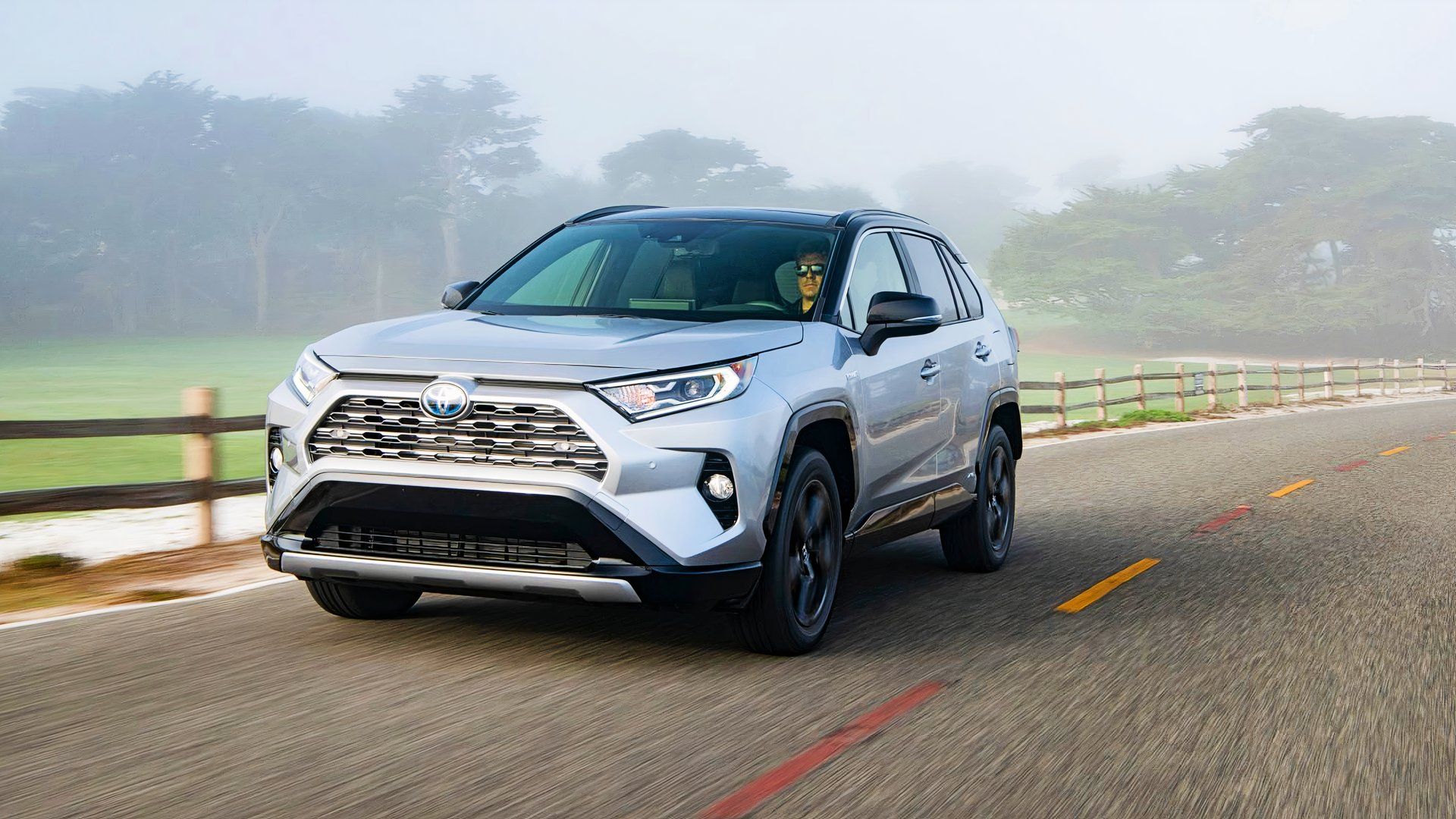
Related
Ranking The Best Toyota RAV4 Hybrid Model Years For Reliability
The Toyota RAV4 Hybrid is pushing a decade on the road, and here’s how they fared in terms of reliability.
It Faces Stiff Competition From Other Plug-In Hybrids In 2025
Plug-in hybrids are fairly new to the industry, but plenty of competitive models are available. The RAV4 Plug-In Hybrid is far from the only well-balanced PHEV on the market.
RAV4 PHEV vs. Hyundai Tucson PHEV vs. Lexus NX 450h+ Specifications
|
2025 Toyota RAV4 Plug-In Hybrid |
2025 Hyundai Tucson Plug-In Hybrid |
2025 Lexus NX 450h+ |
|
|
Starting Price |
$43,865 |
$39,630 |
$61,240 |
|
Powertrain |
2.5-liter four-cylinder with electric motors |
1.6-liter turbocharged four-cylinder with an electric motor |
2.5-liter four-cylinder with electric motors |
|
Horsepower |
302 horses |
268 horses |
304 horses |
|
0-60 MPH Time |
5.5 seconds |
7.6 seconds |
6.0 seconds |
|
Fuel Economy |
94 MPGe |
77 MPGe |
84 MPGe |
|
Tank Size |
14.5 gallons |
11.1 gallons |
14.5 gallons |
|
Driving Range |
593 miles |
421 miles |
559 miles |
|
Battery |
18.1 kWh lithium-ion |
13.8 kWh lithium-ion |
18.1 kWh lithium-ion |
|
Electric Driving Range |
42 miles |
33 miles |
37 miles |
Toyota RAV4 Plug-In Hybrid vs. Hyundai Tucson Plug-In Hybrid
The 2025 Hyundai Tucson Plug-In Hybrid is a small plug-in hybrid that’s a direct competitor to the RAV4 Plug-In Hybrid. It’s more affordable with a starting price that is $4,235 lower than the RAV4 PHEV’s starting MSRP. The Tucson Plug-In Hybrid uses a 1.6-liter turbocharged four-cylinder engine and an electric motor to produce 268 horses and 271 pound-feet of torque.
It’s not as powerful or as quick as Toyota’s PHEV. Furthermore, it isn’t as efficient and it has a lower electric driving range than Toyota’s model (a difference of nine miles). The South Korean small plug-in hybrid has 31.9 cubic feet of cargo space compared to the RAV4 Plug-In Hybrid’s 33.5 cubic feet of cargo space. The Tucson Plug-In Hybrid is a more affordable alternative, but the RAV4 Plug-In Hybrid is superior in just about every spec category.
Toyota RAV4 Plug-In Hybrid vs. Lexus NX 450h+
The 2025 Lexus NX 450h+ is the not-so-distant cousin to the Toyota RAV4 Plug-In Hybrid. That said, it occupies a completely different segment at a different price point and targets a different audience. While Toyota’s model is geared towards the average American family, Lexus’ PHEV offering is a luxury model that costs significantly more than what many small families are willing to spend on an SUV. It costs $17,375 more than the Toyota RAV4 Plug-In Hybrid. Lexus’ model produces 304 ponies and 169 pound-feet of torque using a 2.5-liter four-cylinder engine and electric motors (similar to its Toyota relative).
Lexus’ small plug-in hybrid SUV is 0.5 of a second slower in the 0-60 mile-per-hour sprint. It achieves 10 fewer miles per gallon equivalent and less total driving range than the Toyota RAV4 PHEV. The Lexus model also has less electric driving range. It only has 22.7 cubic feet of cargo space. The Lexus NX 450h+ features better standard tech and a more refined cabin, but Toyota’s small PHEV SUV is a better choice for the average family based on value and performance specifications.
